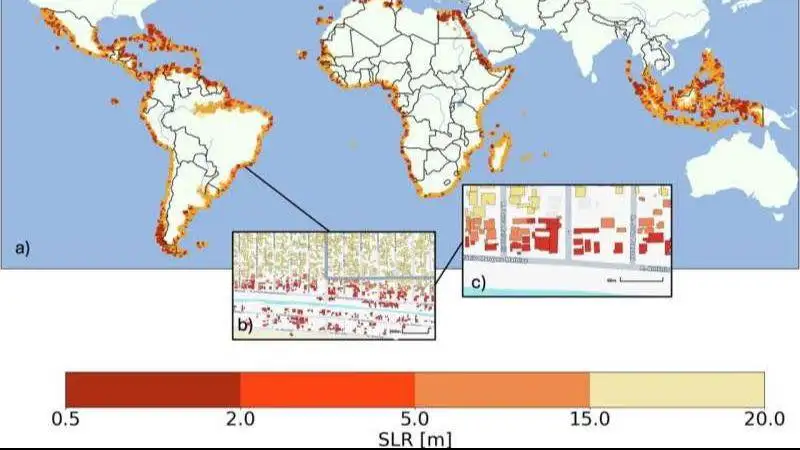Levon Azizyan, director of the Center for Hydrometeorology and Monitoring, SNCO, wrote on his Facebook page:
“According to a new study published in the journal Urban Sustainability, if fossil fuel emissions are not reduced soon, sea level rise could put more than 100 million buildings at risk of periodic flooding. This is the first large-scale assessment to analyze the impact of long-term sea level rise on coastal infrastructure in Africa, Southeast Asia, and Central and South America at the individual building level. Scientists used detailed satellite maps and elevation data to estimate the number of buildings that will be underwater over the next few centuries under different sea level rise scenarios.
Sea level rise is a slow but irreversible consequence of global warming, which is already having a significant impact on coastal populations and will continue for centuries. The study looked at sea level rise scenarios ranging from 0.5 to 20 meters. The results showed that even with a 0.5-meter rise, which is projected even with significant emissions reductions, about three million buildings could be submerged. And with a rise of 5 meters or more, which can be expected in the coming centuries if emissions are not stopped, the risk increases dramatically, with more than 100 million buildings at risk. Most of these are located in densely populated, low-lying areas, which means that entire neighborhoods and critical infrastructure, such as ports, oil refineries, and cultural heritage sites, could be affected.
The scientists emphasize that the results are a crucial tool for city planners, policymakers, and local communities to prepare for the inevitable rise in sea levels. An interactive map of the study is available on Google Earth, enabling decision-makers to identify the most vulnerable areas. This data can be used to develop climate change adaptation strategies in areas such as building protective infrastructure, changing land-use planning, and, in some cases, managed retreat.
Scientists note that even moderate sea level rise cannot be avoided, and the sooner coastal communities begin to prepare for its consequences, the greater their chances of continuing to develop and prosper.




















